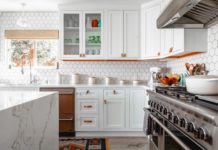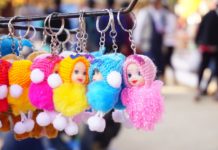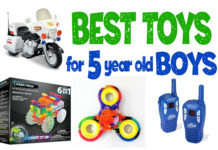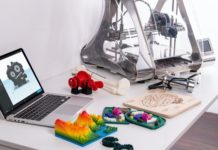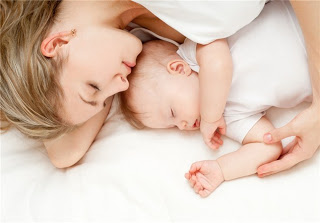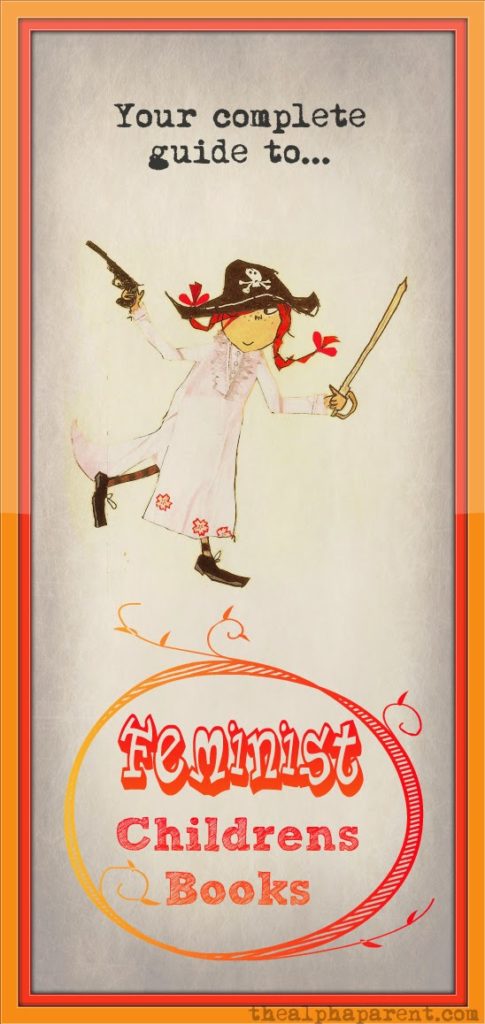
Most children’s books reinforce the same old dominant orthodoxy that sees heroic, athletic or charismatic males take centre stage whilst needy, shallow or hyper-sexualised females stroke the patriarchal ego. Well not on my watch.
I have trawled through the libraries and bookshops of the country in search of that elusive gem: genuine girl-friendly literacy. From toddler to teen, I’ve read every prospective book from cover to cover. In each instalment I will analyse 10 books that tick feminist boxes.
My Mum is Fantastic
Nick Butterworth

Celebrating all things maternal, this simple picture book is written from the perspective of a child and lists all the abilities their mum possesses. An eclectic mix of talents are catalogued. Some are traditionally linked to her gender like gardening, storytelling and knitting (spacesuits!), and some are non-traditional like bike stunts, mending things and taming wild animals (well squirrels at least). The detailed illustrations are a perfect compliment to the basic narrative. There’s no mention of Dad and he’s not featured in any of the illustrations so this book would be ideal for single mum households. There is another book in this series called ‘My Grandma is Wonderful’ however it’s less inspiring because unlike ‘My Mum is Fantastic’, the talents Grandma possesses are virtually all traditional (bird watching, clothes making, administering medicine, and ummn.. untying knots).
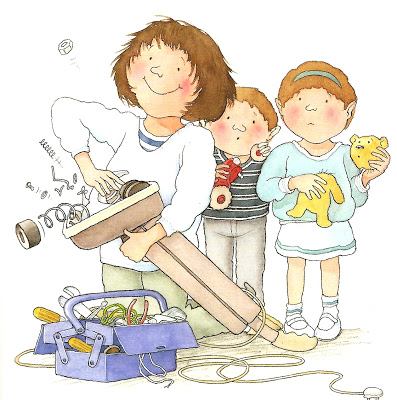

Piggybook
Anthony Browne
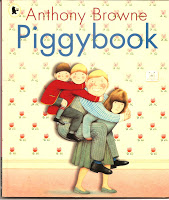
Anthony Browne is renowned for his eccentric illustrations and he surpasses his reputation with Piggybook. This jewel in the crown of feminism features a family of males and their long suffering mother/wife, Mrs Piggott. She cooks, she cleans, she irons, she washes the dishes, she washes the clothes, she makes the beds, she vacuums the carpets, and on top of all this she goes to work. She is undervalued and taken for granted by her sons and her husband who laze around watching TV, slumbering and bellowing like chauvinistic pigs (Mr Alpha – are you reading this?!) An inspection of the illustrations reveals pig puns hidden throughout the book; for instance, pig imagery in the light switch, the buttons on Mr Piggott’s shirt, the door knob, and so on. One day Mrs Piggott finally decides to sod it all and abandons her domestic drudgery, leaving a farewell note. At this point the males of the household morph from metaphorical pigs into real pigs. Incompetent at cooking for themselves (Mr Alpha!!), they are forced to root around for scraps on the dirty floor of the house, which now resembles a pigsty. The dramatic climax occurs when Mrs Piggott returns, which prompts the males to grovel before her. After receiving the (figurative) kick up the arse they needed, the males do their fair share of the housework, which gives Mrs Piggott time to mend the car. Not only does the book provide a vessel for discussing the notion ‘absence makes the heart grow fonder’, it’s also a perfect tool for exploring gender roles, fairness, stereotypes and the nuclear family.





Amazing Grace
Mary Hoffman

Grace is a lively and imaginative preteen girl. She loves acting out stories, from Joan of Arc to Aladdin, and naturally “she always gives herself the most exciting part”. Needless to say that when her school announce they are going to do the play of Peter Pan, Grace is determined to secure the leading role. But she was born with a vagina and she’s black, so how could she possibly be Peter, her friends remind her (…with friends like these?) Naturally Grace arrives home that afternoon all miserable and emo. In an effort to reassure and inspire her, Grace’s Grandmother takes her to the theatre where the lead role is (fake drum roll) a black woman. The illustration which accompanies this part of the story is my favourite. It shows Grace with an expression of awe, pride and determination on her face. “I can be anything I want”, she thinks to herself. This rich depth of expression is also reflected in the book’s other painted illustrations. A notable example is the bemused expression on her mother’s face as ‘Dr Grace’ pretends to bandage a wound on her leg. The climax of the story sees the school auditions for Peter Pan where Grace pulls off an audition that would make Simon Cowell weep into his high-waisted pants.

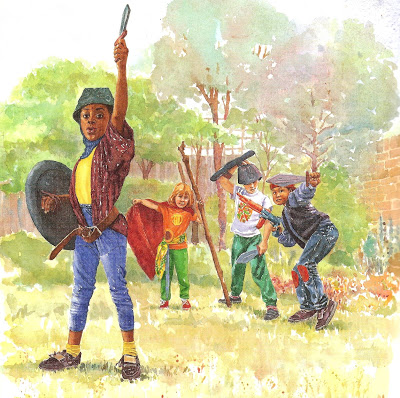
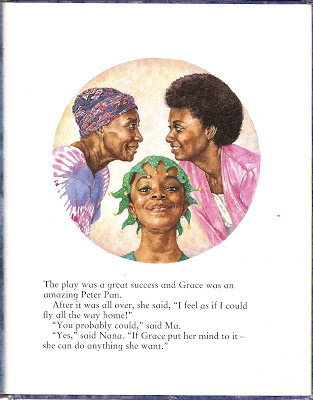
Princess Grace
Mary Hoffman

“What do princesses do, Nana?” asked Grace. “You tell me, darling,” said Nana. But nobody could, except for wearing beautiful clothes and looking pretty. “That doesn’t sound so interesting”, said Grace. Princess Grace is what I call a ‘princess parody book’. It features stereotypical imagery of princess paraphernalia – tiaras, bling, beauty, puffed sleeved dresses, princes, etc, and yet it’s fundamental message is that being brave and adventurous trumps attractiveness. When her school holds a competition (FFS! why are they always doing this?) to find the best princess to feature in a parade, this prompts Grace to explore what it means to be a princess. With the help of her teacher she learns about warrior princesses such as Pin-Yang of China who started a woman’s army, and Amina of Nigeria who led warriors into battle and built walls around villages. Eventually Grace decides that she doesn’t want to dress like the stereotypical princess found in Western patriarchal culture. She opts for West African Kente robes instead. In the closing sentence of the book Grace says: “I feel like a proper princess – ready for an adventure”.
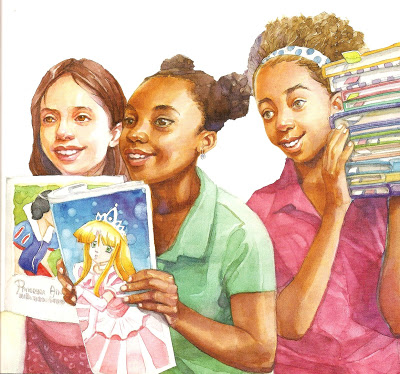
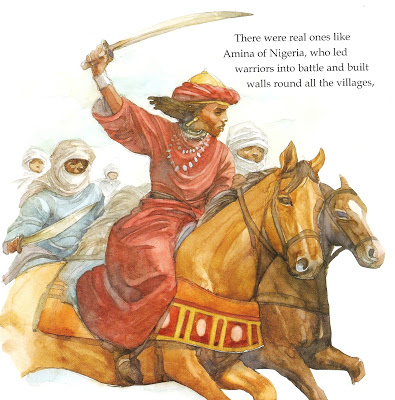


Princess Smartypants
Babette Cole

This is another ‘princess parody book’. Like a traditional princess the protagonist of this book, Princess Smartypants, lives in a large castle, has long flowing blonde hair, paints her nails, wears a crown and owns many luxurious possessions including horses and bling. However unlike traditional princesses she eats fattening chocolates, is the owner of quite a bulbous nose, often wears dungarees, prefers ferocious monsters over kittens, and most importantly – she does not want to get married. Instead she enjoys being a “Ms”. But being a rich and pretty princess means that all the princes want her to be their Mrs. The story shows how Princess Smartypants fought to preserve her independence by setting each potential suitor a series of seemingly impossible tasks – feeding her ferocious monsters, collecting firewood from a demented forest, climbing a very tall glass tower (which she had polished to make it more slippery). One after one, the potential suitors failed, the illustrations of which encourage us to point and laugh at their lameness. However one day a particular smartarse of a prince turns up. He effortlessly completes the tasks meaning consequently that Princess Smartypants must forgo her pride and kiss him! Luckily for her, the kiss turns him into a warty toad and he storms off. No one wanted to marry Princess Smartypants now “so she lived happily ever after”. The ending illustration shows the princess raising a glass with a cheeky grin as she reclines in leisure.
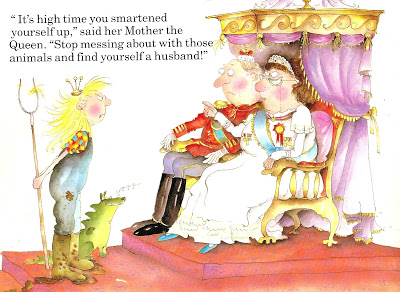

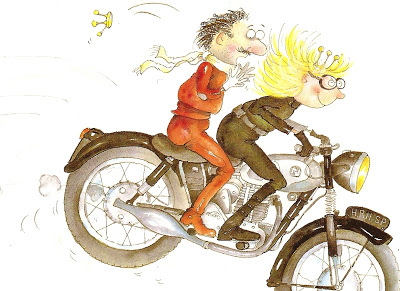
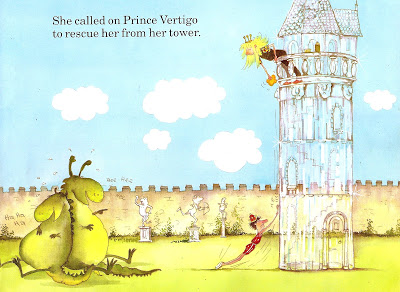

Princess Smartypants Breaks the Rules
Babette Cole
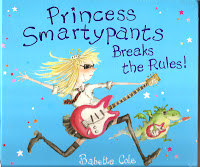
“Just look at you, Princess Smartypants,” said her mother the Queen. “You will never get a prince like that”. And so starts a tale about rebellion, mischief, and being true to yourself. In this instalment of the Princess Smartypants saga, the princess is sent off to finishing school to learn how to behave like a ‘proper princess’. This essentially means practising hair and makeup application, learning to walk with a book balanced on your head, being endangered so as to allow a prince to rescue you, and other assorted ways to appease the Patriarchal order. However Princess Smartypants’ own translation of these tasks is somewhat different, and irresistibly hilarious. Imagine the makeup skills of a badly dressed transvestite, erratic roller skating with a book pressed to your head, and clobbering menfolk with a mallet. After breaking the rules, the princess rewrites them. Some of her revisions include “Lesson 1: Stop waiting for a bunch of Hooray Henrys to turn up and save you!” “Lesson 2: Learn to govern your own kingdom”. Of course, this being a book by the richly talented Babette Cole, there are many layers of the story that cannot be squeezed into this review. Details include a King who is under the thumb of his Queen, a snobby finishing school head mistress who looks, and acts, uncannily like Edna Mode from Disney’s Incredibles, and a class full of newly trained bra burning, hair slicing, cake eating princess rebels. Princess Smartypants Breaks the Rules is an empowering book that presents a more exciting charismatic breed of princess that girls will prefer to aspire to.
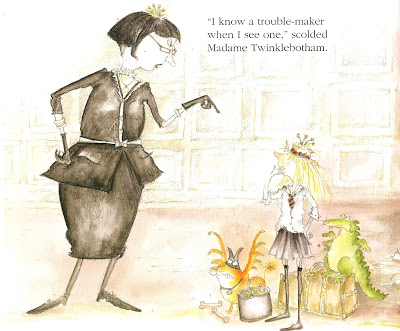

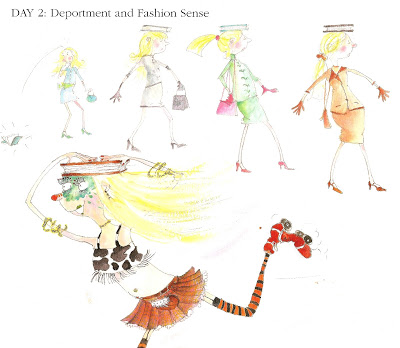

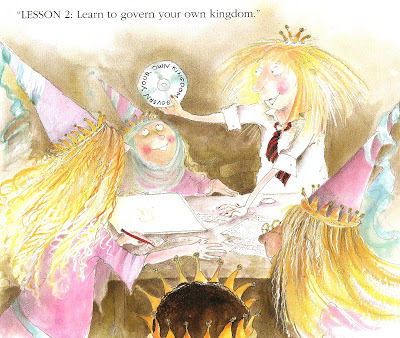
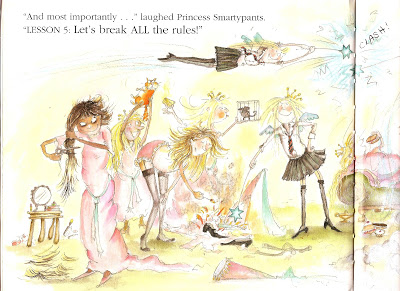
Long Live Princess Smartypants
Babette Cole
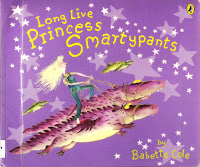
Princess Smartypants has decided she’d like to have a baby but doesn’t want the husband to go with it. The Queen will not hear of such a plan (“Having a baby without being married? Certainly NOT!”) and attempts to take her mind off it by keeping her busy. However, a crackly telephone line and a mixed-up grocery list result in Smartypants getting the baby she wants (don’t ask). Most likely you’re a parent if you’re reading this, so you know as well as anyone that looking after a baby is more laborious than labour itself, and more exhausting than training for the Olympics. Poor Princess Smartypants discovers this the hard way. Her baby appears to have super human strength and wreaks havoc on the kingdom like a hyperactive toddler on steroids. Her baby is also brown – which adds an interesting interracial/adoption slant to the story, true to Babette Cole’s talent of producing multilayered narrative. However regrettably, this book is the weakest of the trilogy from a writing viewpoint, and although heroic, the princess is depicted as more clumsy and less confident than previous portrayals. Such is the legacy of parenthood.



Running Shoes
Frederick Lipp

Sophy lived in a remote village. She had only one wish – to go to school. However the closest school was miles away and her widowed mother didn’t have money for transport. One day Sophy came by some running shoes, and being resourceful, she used them to run the distance to school every day. Sophy was the only girl at the school however she was not deterred. Instead she ran rings (literally and metaphorically) around her male peers. This touching tale is beautifully illustrated and poignantly written. When she is ridiculed by her male class members, the text informs us that “Sophy pulled her courage together like a green snake ready to strike”. Illustrator Jason Gaillard’s detailed watercolour paintings capture the exoticness of the non-western cultural setting where children wear flip-flops to school, the houses have thatched roofs, and the school is a single room. The climax of the story is as tender as it is heart-braking. ‘Running Shoes’ is an effective way to explore the sad reality that having no access to education is a fact of life for many children, particularly girls. But it doesn’t have to be this way.
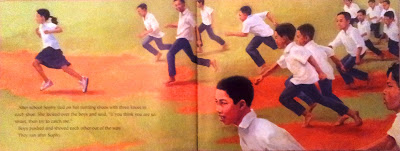

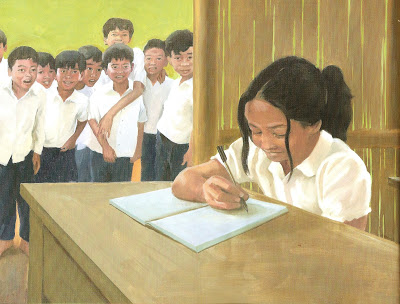
Me… Jane
Patrick McDonnell

We all know the story of Tarzan, but what about Jane’s story? In ‘Me…Jane’ we learn how Jane is not the passive supporting-character damsel that Disney would have us believe. She is ambitious, determined, observant and intelligent. In fact, she is more deserving of the spotlight than Tarzan! This book begins by introducing us to Jane, a fangirl with a big fascination for the animal kingdom, and perhaps a touch of OCD. She spends her days studying animals in her garden, researching the different species, and writing intricate notes about her observations. The illustrations in ‘Me…Jane’ tell this story via a complimentary pairing of cheerful cartoon drawings and realistic sketches with ink prints. Two thirds into the book the narrative describes how Jane tucks up in bed with her stuffed toy chimpanzee each night and dreams about Africa. Then one day she awakens… “to her dream come true.” She is now Dr. Jane Goodall – primatologist, environmentalist, humanitarian, and United Nations Messenger of Peace. Trufax.
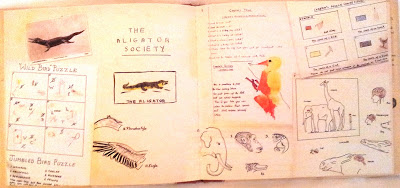

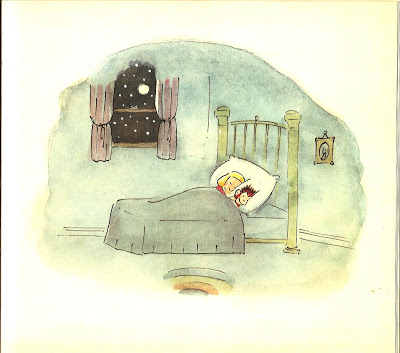

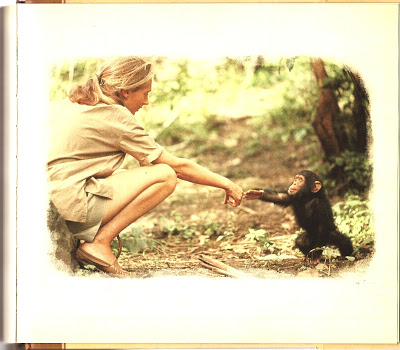
Mary’s Penny
Tanya Landman
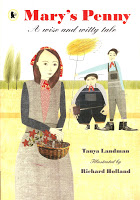
Mary’s Penny is a story about lateral thinking. One upon a time, a long time ago, there lived a farmer. He couldn’t decide which of his two sons should own his farm when he was dead. It didn’t occur to him to consider his daughter Mary. After all “girls can’t run farms” silly. So he gave each of his sons a penny and said that whoever could buy something that would fill the whole house shall run the farm (sounds like he had other issues besides sexism). The boys went to the market. One son bought straw (you could get a lot of straw for a penny back in the day). The other son bought feathers (ditto value for money). However after lugging their purchases back home neither son could fill the whole house. Reluctantly the farmer gave Mary his last penny. She then set about to prove that: “It takes brains not brawn to run a farm”. The story is random and nonsensical, true to the fairytale genre. The Times newspaper has declared this book, “Feminism at its best”. However whilst predictably Mary triumphs and wins the farm, the climax is somewhat unsatisfying. Basically she fills the house with light and song. An illustration shows Mary (who just happens to be pretty and slender with perfectly symmetrical features, button nose, the works) playing a flute by candlelight. It’s a bit too disneyesque for my liking. This rhetoric of ‘femininity as graceful’ is reinforced by the stylised choice of typeface. The names of the two sons, Hans and Franz, are printed using thick bold font in capital letters. Mary’s name on the other hand is presented in delicate and thin wispy brush script. Presumably this is to exaggerate differences between the masculine and the feminine.
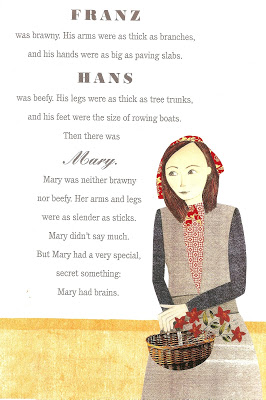

Jump to: Feminist Children’s Books, Part 2
